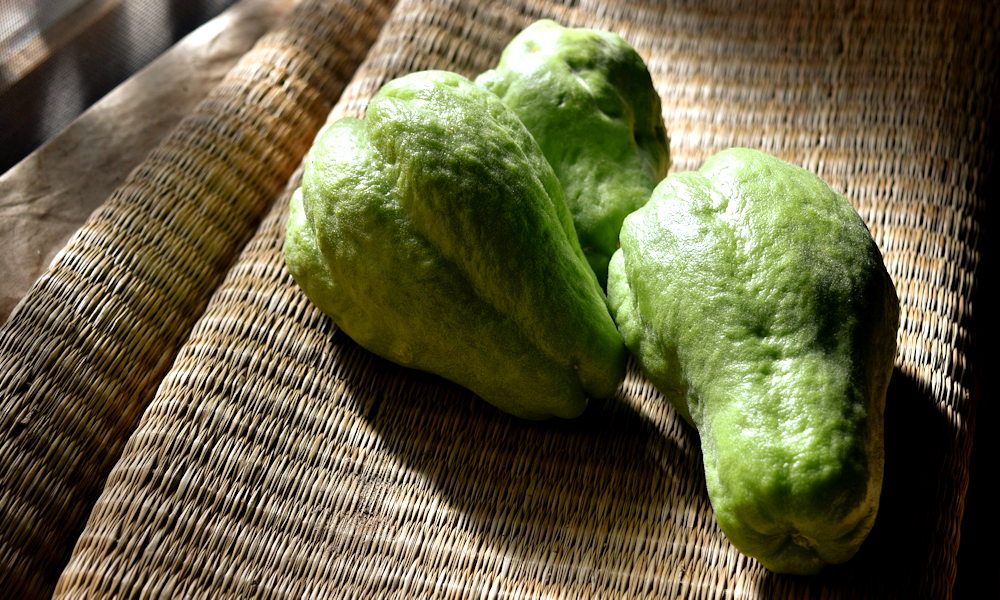Chayote, scientifically known as Sechium edule, is a remarkable vegetable-fruit that often remains underestimated in the culinary world. Originating from the lush lands of Mesoamerica, this green gem offers not only a unique flavor but also a wealth of culinary and nutritional possibilities.
The Origin of Chayote: A Journey Through Time and Space
Chayote’s story begins in Mesoamerica, where it has been cultivated for centuries. Its roots trace back to the ancient Aztec and Maya civilizations, who prized it for its versatility and nutritional value. Over time, chayote’s popularity spread, and it can now be found in various parts of the world, adapting to diverse climates and cuisines.
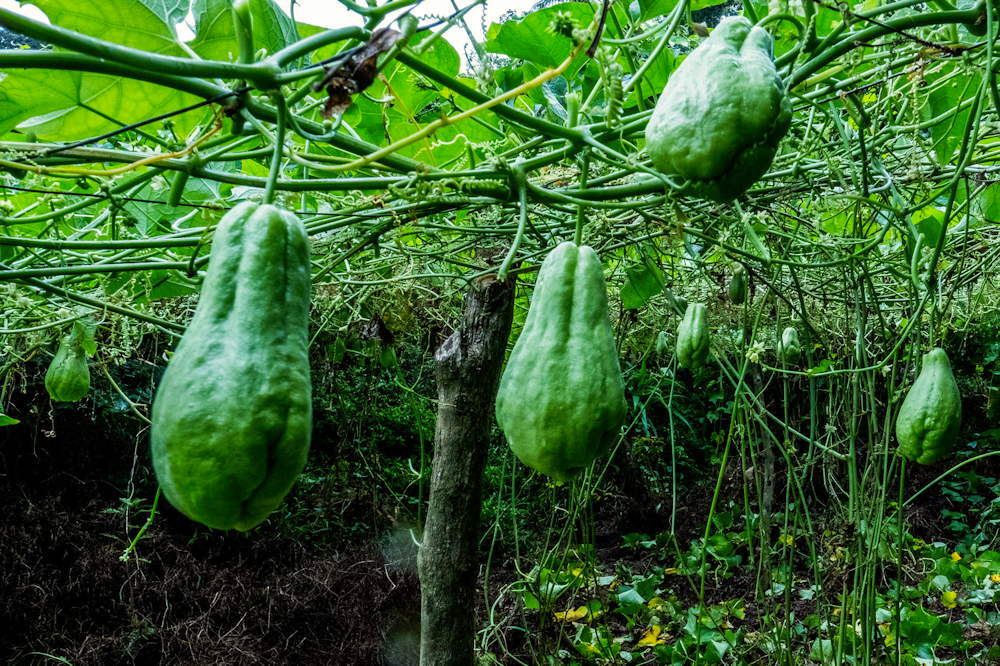
The Appearance of the Chayote Plant: Nature’s Puzzle Piece
The chayote plant is a climbing vine that showcases its distinctive nature through its unique appearance. Its heart-shaped leaves and tendril-bearing stems give it an elegant, almost decorative quality. The plant’s main parts include the leaves, tendrils and the fruit, which is the true treasure of this vine.
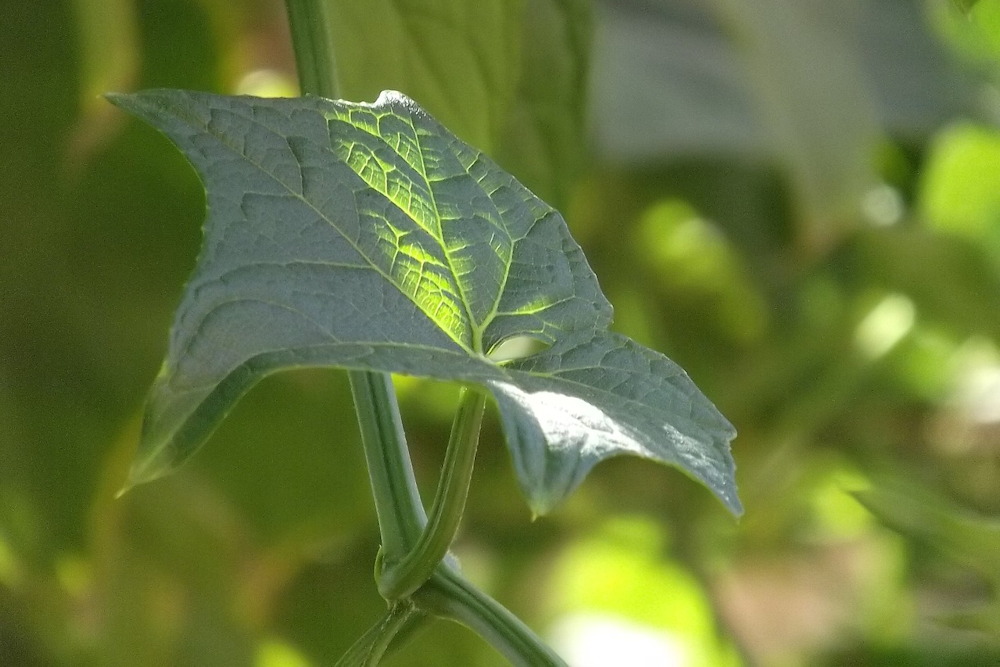
Chayote fruit is green, wrinkled, and slightly pear-shaped, with a single, large, flattened seed in the center. Its skin is smooth but can develop a few spiky projections as it matures. The flesh is crisp and pale green, encasing the seed, which is also edible when cooked. When ripe, chayote may emit a subtle, pleasant aroma, adding to its allure as a versatile culinary ingredient.
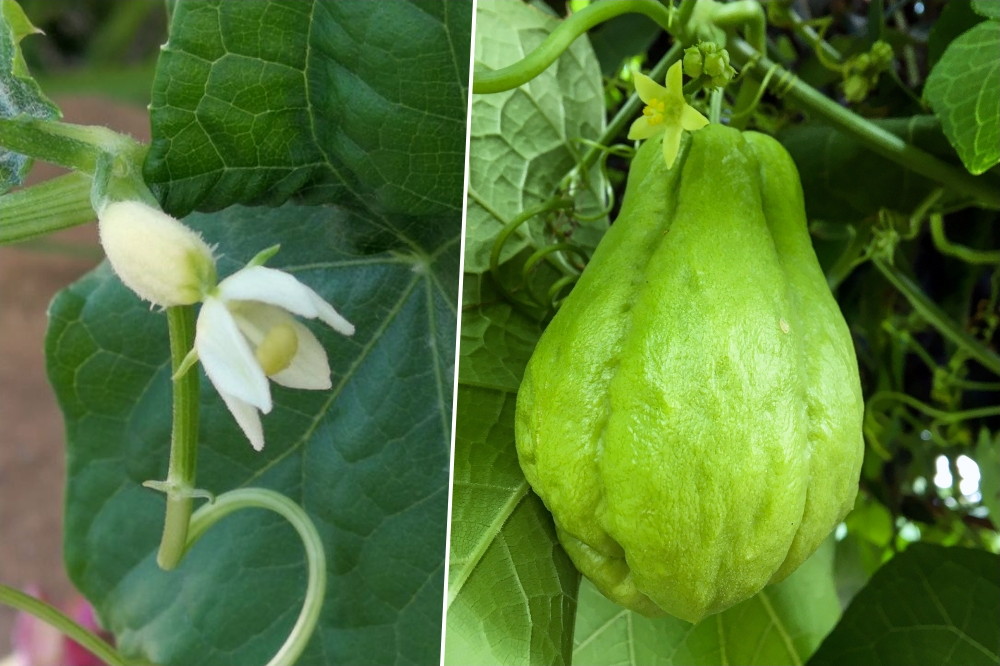
A Taste of Chayote Fruit: Nature’s Mild Delight
Chayote’s flavor profile is a gentle, pleasing surprise. With a crisp, mildly sweet flesh that resembles a cross between a cucumber and a pear, it adds a refreshing touch to a variety of dishes. Its subtlety allows it to absorb the flavors of accompanying ingredients, making it a versatile addition to both savory and sweet creations.
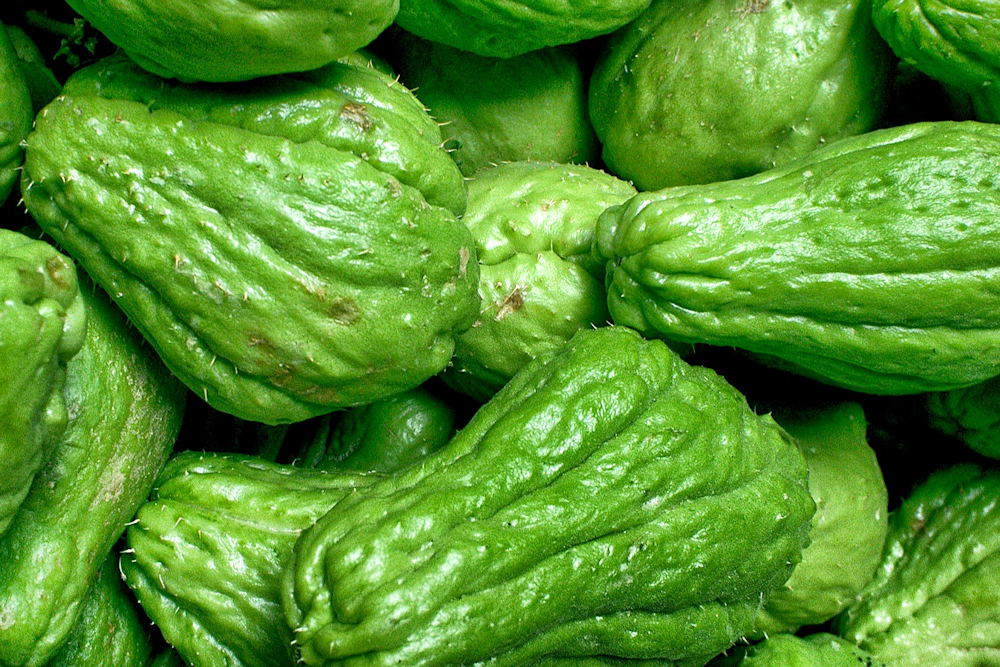
Cultivation Tips: Nurturing Your Chayote Garden
Chayote, a warm-season plant, thrives in subtropical and tropical climates. It requires a minimum temperature of around 50°F (10°C) to grow successfully. Ensure your garden provides plenty of sunlight, well-drained soil and a frost-free environment to nurture this versatile vine to its full potential.
If you’re considering growing chayote in your garden, here are some essential tips to ensure a thriving harvest:
- Choose the Right Location: Plant chayote in well-drained soil with plenty of sunlight.
- Planting Chayote: Use fresh chayote fruit with a sprouting shoot, bury it horizontally, and provide adequate spacing.
- Support System: Install trellises or fences for the vine to climb.
- Watering: Keep the soil consistently moist but not waterlogged.
- Fertilization: Feed the plant with a balanced fertilizer during the growing season.
- Pruning: Regularly prune to manage the vine’s growth and promote fruit production.
- Pest Control: Monitor for pests like aphids and caterpillars and take appropriate measures.
- Harvesting: Harvest chayote when it reaches the desired size and is still firm to the touch.

Culinary Uses: Unleashing Chayote’s Potential
Chayote’s culinary uses are diverse and span across cultures. It holds a special place in Mexican cuisine, where it is commonly featured in dishes like chayote salad or cooked as a vegetable side. In the Philippines, chayote is known as “sayote” and is frequently included in stir-fries and soups. Additionally, you’ll find it gracing the tables of Caribbean, Latin American and Southeast Asian cuisines, showcasing its adaptability and popularity on a global scale.
Here are some of the most typical ways to enjoy this versatile ingredient:
- Salads: Slice or cube chayote for refreshing salads.
- Stir-fries: Add chayote to stir-fries for a delightful crunch.
- Soups: Enhance the texture of soups and stews with chayote.
- Pickles: Preserve chayote with vinegar and spices for a zesty condiment.
- Desserts: Experiment with chayote in pies, tarts and even jams.
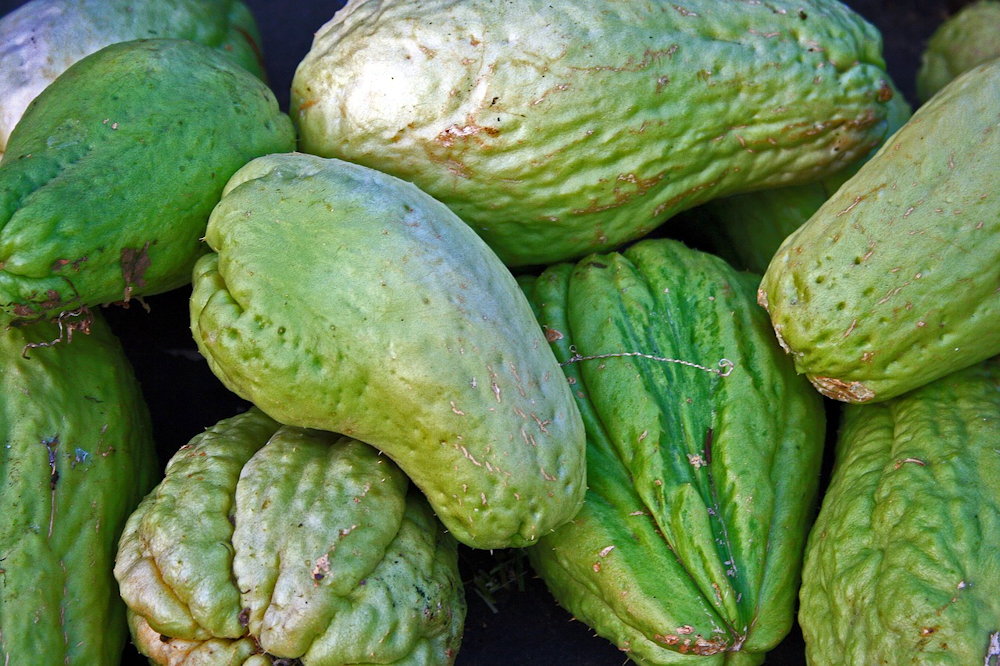
Chayote’s Intriguing Secrets
- Folklore Medicine: In traditional medicine, chayote has been used to alleviate various ailments.
- Natural Diuretic: Chayote is known for its diuretic properties, aiding in kidney health.
- Skin Regimen: The high vitamin C content in chayote can benefit your skin.
- Edible Seeds: Chayote seeds are edible and can be roasted or eaten raw.
- Low-Calorie Marvel: Chayote is a low-calorie vegetable, making it a great choice for weight-conscious individuals.
- Sustainability: Chayote requires minimal resources to grow, making it an eco-friendly choice.
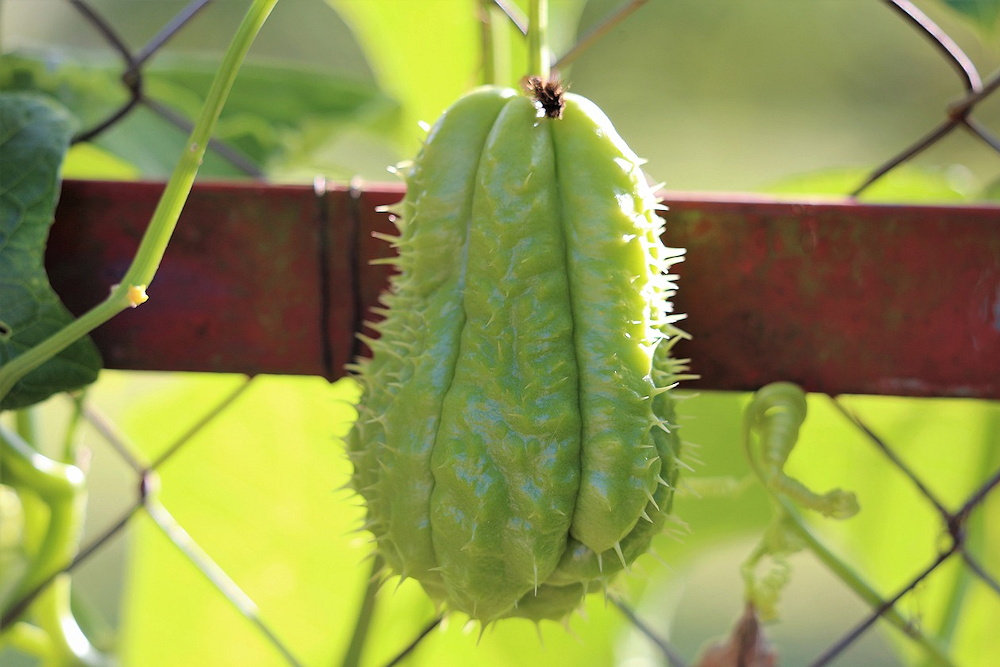
A Culinary Voyage with Chayote
Chayote is more than a simple vegetable; it’s a culinary adventure waiting to be explored. Its subtle flavor, adaptability and rich history make it a delightful addition to any kitchen. Whether you’re a seasoned chef or an aspiring home cook, don’t miss the opportunity to incorporate this versatile gem into your culinary repertoire. You can easily source chayote fruit in most well-stocked grocery stores, local markets, or even consider growing it in your garden for a truly fresh and rewarding experience.

Incorporating Chayote: Unlocking Nature’s Treasure Trove
As you embark on your chayote culinary journey, remember that this humble vegetable-fruit is a testament to the incredible diversity and richness of our natural world. With its mild taste and unique texture, chayote offers endless possibilities for those willing to explore its potential. So, embrace the chayote and savor the flavors of this hidden gem, making it a cherished part of your culinary repertoire.



